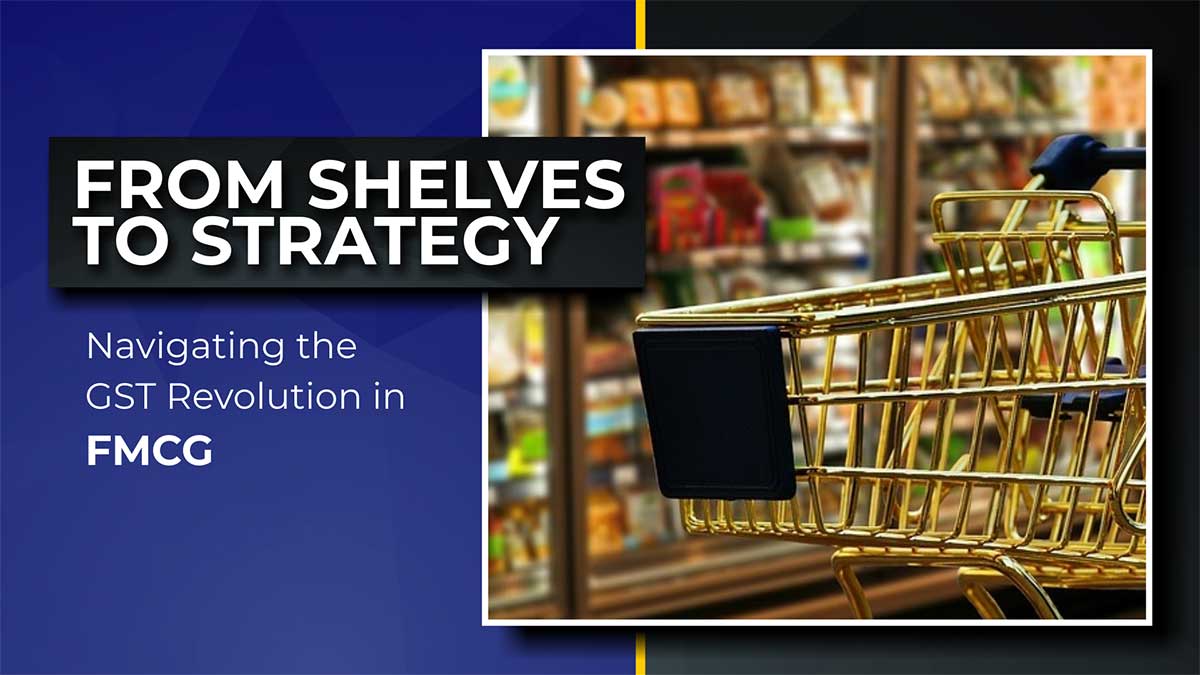
The Fast-Moving Consumer Goods (FMCG) sector in India has emerged as a vital contributor to the economy, with robust growth attributed to factors such as consumer-centric expansion and government initiatives. The industry, employing around 3 million people and constituting 5% of total factory employment, faces a transformative era influenced by factors like a burgeoning rural market, a youthful demographic, and the rise of e-commerce platforms. Further, the implementation of indirect taxes such as Goods and Services Tax (GST) indirect taxation has brought both benefits and challenges to the sector. Along with benefits, the industry grapples with issues such as GST Compliance, c hanging rates, product classification ambiguity, and concerns related to returned goods.
Exploring the Catalysts Behind India’s Robust FMCG Growth
The Fast-Moving Consumer Goods (FMCG) sector in India has experienced robust growth in recent years, driven by consumer-centric expansion and increased prices, particularly for essential goods. Providing employment for approximately 3 million people, contributing to 5%1 of total factory employment, the FMCG industry is a significant player in India’s economic landscape.
The key growth drivers encompass favorable government initiatives, a burgeoning rural market, a youthful demographic, the introduction of new branded products, and the growth of e-commerce platforms. In order to survive and increase long-term value FMCG companies must prioritize resilience in their manufacturing processes, day-to-day operations, retail and logistics channels, as well as consumer insights and communication. The FMCG market is expected to exhibit a Compound Annual Growth Rate (CAGR) of 27.9%2 from 2021 to 2027.
Navigate the transformative impact on India’s FMCG sector. Discover challenges, changes, opportunity including the critical aspect of GST compliance.
Transformative Effects of GST on FMCG
The impact of Goods and Services Tax (GST) on the Fast-Moving Consumer Goods (FMCG) sector is profound, as taxation on everyday products directly affects consumers’ lives. Essential items like milk, curd, wheat, rice, and other basic food commodities enjoy nil GST, reflecting the government’s efforts to keep overall taxes low, benefiting both the sector and the common man.
In terms of benefits, the implementation of GST has led to a reduction in logistics costs and the improvement of supply chain management in the FMCG sector. This, in turn, has resulted in reduced costs for businesses, providing a dual advantage of cost savings for consumers and an overall boost in consumption.
However, the sector faces several challenges under GST, including frequently changing rates, ambiguity in the classification of products, and issues related to the treatment of returned goods. Anti-profiteering concerns and complexities surrounding Input Service Distributor (ISD) and blocked credits further add to the challenges faced by FMCG businesses.
Despite these challenges, it is important to acknowledge the positive changes that GST has brought to the FMCG sector. While transition issues are expected with any major change, efforts are ongoing to resolve them. GST has played a pivotal role in controlling inflation and streamlining taxation, contributing to the overall growth and development of the FMCG industry.

Understanding the Impact of GST on Manufacturers and Consumers by Pravinkumar Chaudhary, Director – Madhvi Dairy Private Limited
GST has brought positive changes, especially in reducing logistics costs for FMCG goods by combining taxes like VAT, Entry Tax, and Octroi. This has boosted demand for fast-selling, non-branded items. Manufacturers now don’t need warehouses in every state, improving supply chain efficiency.
The government’s commitment to keeping taxes low on essential items aligns with GST’s core principle. Products like milk, curd, Lassi, and staple foods with nil GST have become more affordable, reflecting the government’s dedication to public welfare.
Reducing indirect and logistics costs has made the final production of FMCG goods cheaper for both manufacturers and consumers. It’s encouraging to see these cost savings benefit consumers, making essential products more affordable and driving increased consumption, positively impacting the FMCG industry’s growth.
However, challenges like ambiguity in tax refunds for companies in different states, frequent tax rate changes, and anti-profiteering issues have emerged. Addressing these issues is crucial to ensure the effective passage of GST benefits to consumers and to resolve concerns about tax computation and manufacturers’ profits. Despite these challenges, the overall cost structures, efficiency, and logistics in the FMCG industry demonstrate the advantages of GST. In our view, a robust dispute resolution system that is quick is the requirement of the day. Certainty in tax policies is key for business development, hope the setting of tribunals is able to achieve this.
